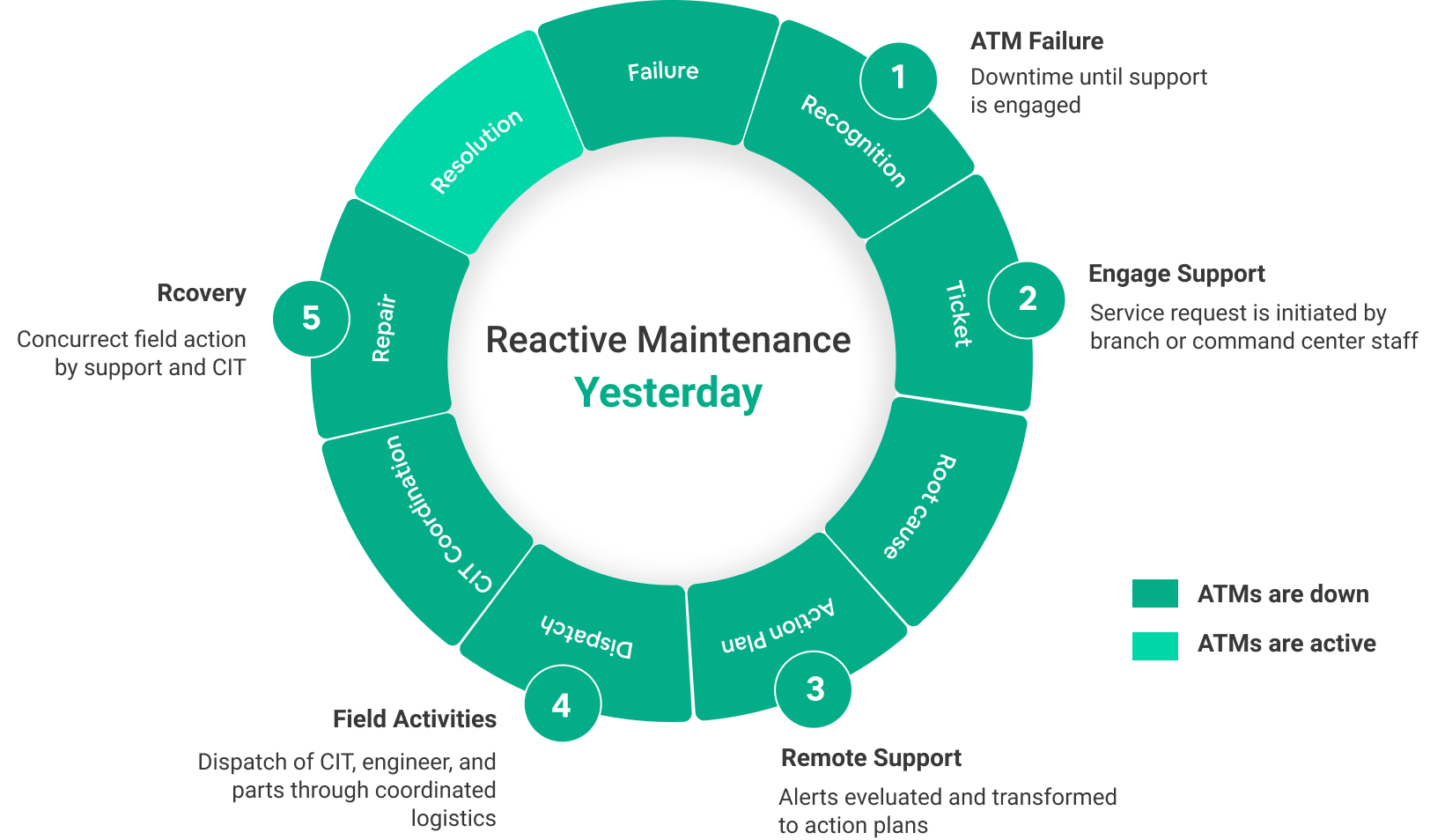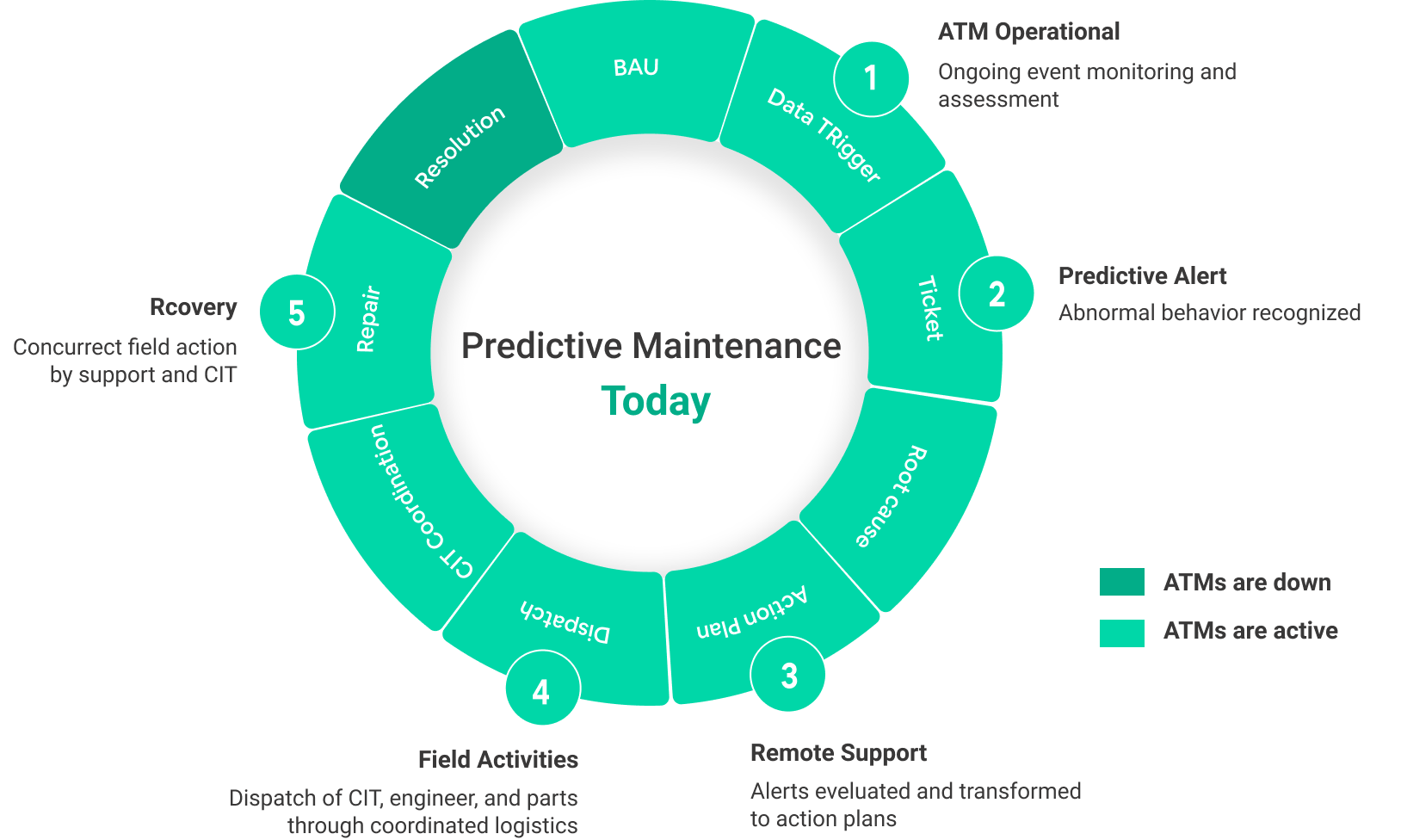|
Getting your Trinity Audio player ready...
|
Predictive maintenance of ATMs reconstructs the operational cycle to create additional value for banks. How- the answer lies in the difference between the decisions we make when we can anticipate the future and when we can not.
According to an IBM report, the number of ATMs worldwide is expected to grow to 4 million by 2021. Considering this growth, the role of predictive analytics becomes especially important. Reducing ATMs’ downtime and retaining customers for longer periods are two vital aspects of predictive maintenance. Leveraging predictive analytics to monitor atypical ATMs’ performance and forecast when a failure might occur to take necessary actions helps in building sustainable competitive advantage.
The prominence of Predictive Maintenance of ATMs In Banking
The demand for digital banking services is experiencing growth. And if you are a retail bank, that cannot address your customers’ needs whenever they want, 60-70% of them simply switch banks due to un-satisfying service. So the availability of ATMs installed is more important than ever. As banks continue undergoing a digital transformation, the number of ATMs installed is becoming a focal point for user experience and self-service.
Before we talk about the prominence of predictive maintenance of ATMs in banking, what do you think about how much time will a bank has before they switch to competitors’ ATMs when their ATMs are down?
Banks most often experience prolonged off-time of ATMs due to uncontrollable outages. Predictive maintenance helps banks in maintaining an ATM-installed base by proving sufficient time to respond to outages as they occur. Rising tickets in advance and alerting service providers before the machine breakdown significantly reduces machine downtime and provides end-users the opportunity to experience the service they are seeking. By observing the below figure you can distinguish between reactive maintenance and predictive maintenance for effective understanding.


Source: IBM
Employing a predictive maintenance system can benefit your retail banking needs and help in experience:
1. Prevents machine downtime
Technological advancements in retail banking provided a supreme advantage for bankers in leveraging their cognitive analytics to predict event outcomes. Observing ATM service outages and analyzing each ATM system’s functionality over a period helps you in identifying and resolving problems before operational failures occur. Predicting and maintaining ATM service operations at regular intervals helps in reducing time in resolving outages and enhances customer outcomes.
2. Data-driven predictive maintenance
Data-driven predictive maintenance helps banking in anticipating machine break-downs with the utmost accuracy. Tracking the limit of the number of transactions under distinct conduction for a specific ATM base and analyzing this data to identify a malfunction regardless of machine type, banks can schedule and perform predictive maintenance even before the crisis occurs. Not only predictive maintenance but data-driven early machinery care resolves multiple issues related to machine breakdowns.
3. Reduced operating costs
Minimizing overall operational costs and maximizing operational outcomes is one of the key advantages of leveraging predictive maintenance of bank ATMs. identifying and resolving problems in advance reduces additional operational costs and helps in mitigating challenges with service labor. predictive maintenance allows for increased reliability and durability, which reduces the frequency of unpredictable machine breakdowns. As machines are monitored and serviced regularly, engineers spend less time repairing and maintaining ATMs over time. And maximizing the effectiveness of the workforce will help banking in meeting the demand for engineering staff in real-time without hiring and training new employee’s.
4. Effective inventory management
Employing predictive maintenance consistently over time will enable you to hold up less stock of ATM parts that are required to achieve greater output. Decreased stock requirements mitigate challenges like housing unnecessary parts, missing out on a required number of ATM service parts, or stocking an entire pack of ATM parts instead of required ones. Mapping the requirement of inventory and loading in required stock materials allows companies to make more efficient use of their storage facilities and invest the time and budget spent on inventory management somewhere else in the operations cycle for effective outcomes.
Predictive maintenance of bank ATMs has a range of benefits apart from a few applications discussed above. And the correct implementation of preventive maintenance systems can provide tangible and continuous benefits over time that scale growth and customer experience. If you would like to know more about the predictive maintenance of bank ATMS or are willing to deploy it as a service please contact us.
Talk to our experts
